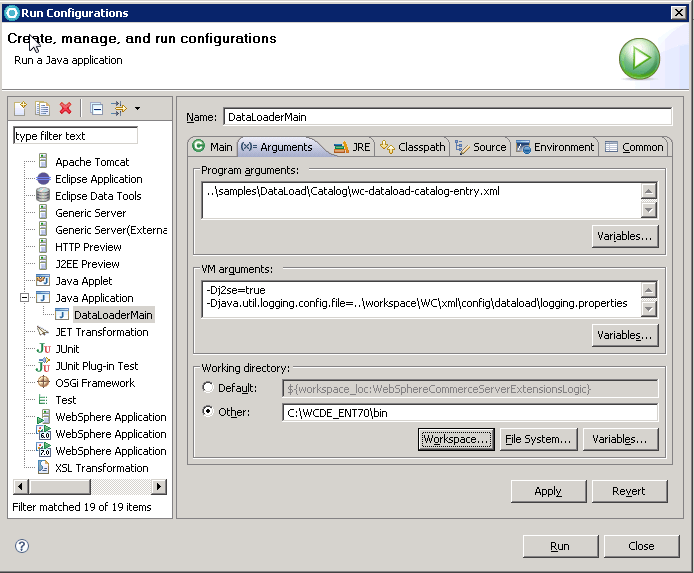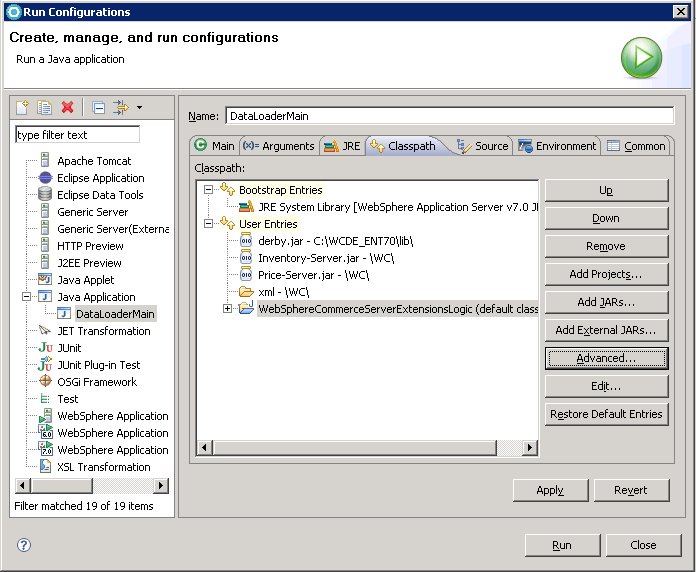Run the Data Load utility inside the development environment when testing customizations
or when debugging issues with the utility. This configuration to run the utility is less
time-consuming than first deploying to a runtime environment, then running the utility for test
purposes.
Procedure
-
Open WebSphere Commerce Developer.
-
Click .
The Run Configurations dialog displays.
-
Create a Java Application configuration.
Double-click the Java Application on the left panel. On the
Main tab, enter the following information:
-
In the Name field, type a name for your configuration.
-
In the Project field, enter the project
WebSphereCommerceServerExtensionsLogic.
-
In the Main class field, enter the class name
com.ibm.commerce.foundation.dataload.DataLoaderMain.
-
Click the Arguments tab. Enter the following information:
-
In the Program arguments field, type the path to the load order
configuration file.
-
In the VM arguments field, set the following parameter:
-Dj2se=true- Sets the Java platform type to J2SE. Set the value to true.
-Djava.util.logging.config.file=..\workspace\WC\xml\config\dataload\logging.properties- Enables the logging for the Data Load utility. The logging information is included in the
logging.properties file in the
workspace_dir\WC\xml\config\dataload directory.
-
In the Working directory field, enter the
WCDE_installdir/bin directory.
-
Click the Classpath tab; click User Entries, then
add the following class path information:


 Click Add External JARs, then browse
to the location of the JDBC driver JAR file for the specific database you are using. Click
Open.
Click Add External JARs, then browse
to the location of the JDBC driver JAR file for the specific database you are using. Click
Open.
 WCDE_installdir\lib\derby.jar
WCDE_installdir\lib\derby.jar
 db2_installdir\java\db2jcc4.jar
db2_installdir\java\db2jcc4.jar
 oracle_installdir\jdbc\lib\ojdbc6.jar
oracle_installdir\jdbc\lib\ojdbc6.jar
-
Click Add JARs, then browse to the location of the
Inventory-Server.jar and Price-Server.jar files in the
WCDE_installdir/WC directory.
-
Click , then click OK. Go to , then click OK.
-
Click Run.
-
Verify the results of the load.






